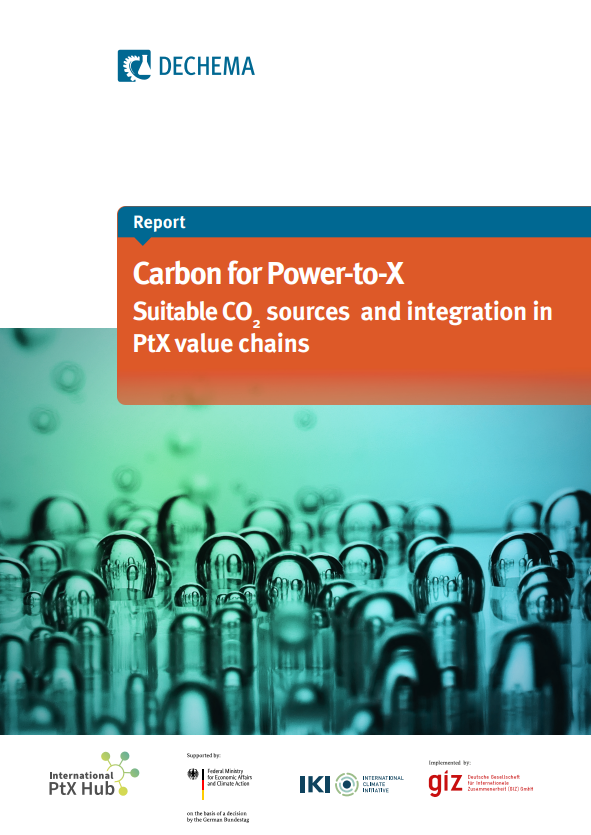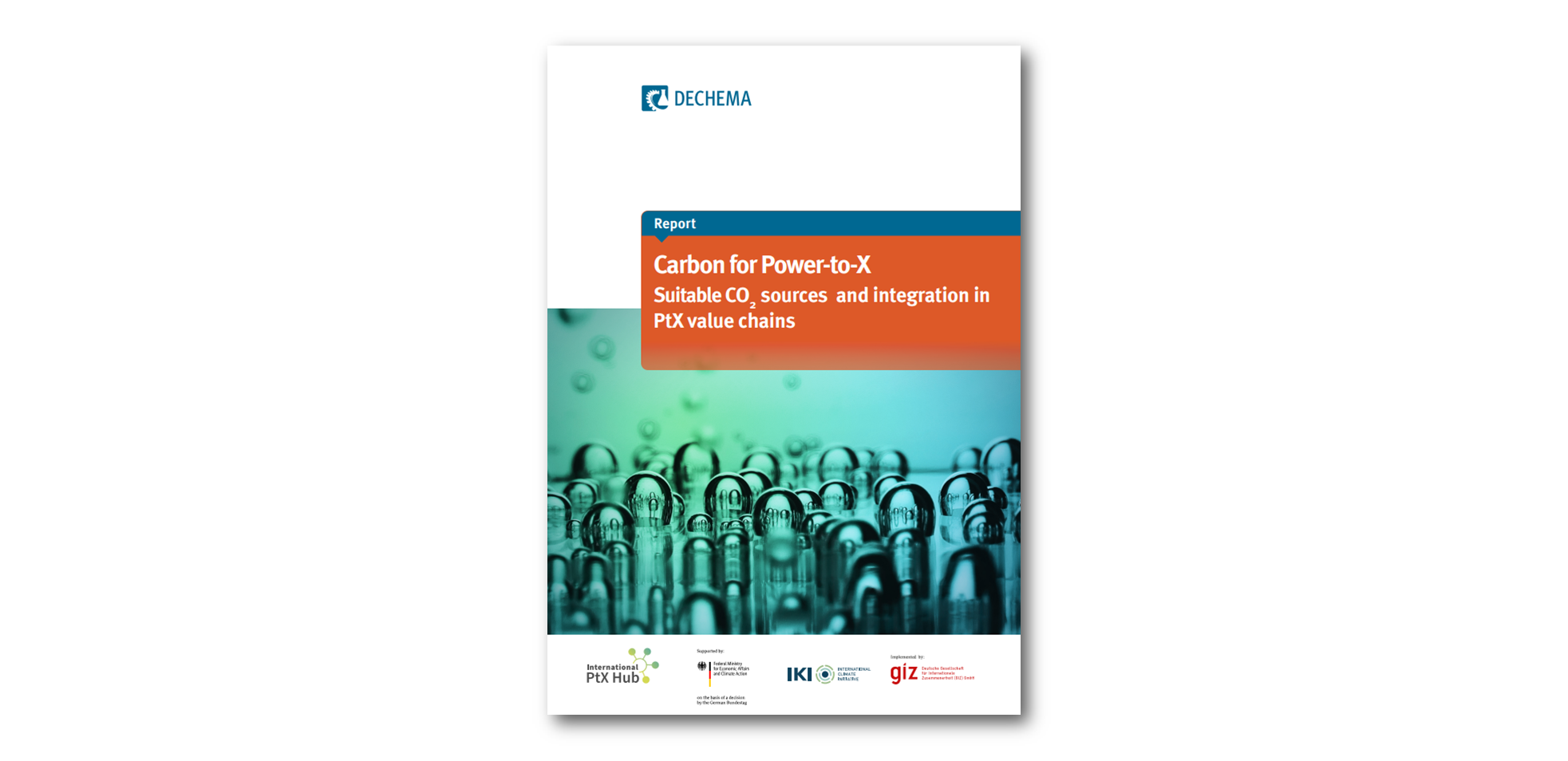At present, carbon dioxide (CO2) is mainly a waste product in many sectors. Globally, about 37 gigatonnes of CO2 are emitted into the atmosphere each year. Although efforts are being made to minimise these emissions, there will still be unavoidable CO2 streams in the future. These can be used as feedstock for PtX production.
A new report led by DECHEMA e.V. examines point sources and state-of-the-art CO2 capture methods. The report shows that CO2 can be captured from the energy and industrial sectors, biogenic processes, waste and wastewater, and atmospheric air. Sources involving the use of fossil resources have additional sustainability implications and potential lock-in effects need to be considered. Therefore, CO2 sources with a closed carbon cycle are more suitable for achieving sustainability goals.
Today’s value chains of most commonly used products are immensely shaped by the petrochemical industry, which deliver basic chemicals like methanol. These fossil-based molecules are currently produced in mega tonnes scale. Power-to-X enables us to establish alternative production routes for these essential compounds, based on CO2.
Luisa López, DECHEMA e.V., Co-Author of the report
Key findings of the report
The report provides an overview of CO2 capture and purification technologies. These technologies are already well developed and their application depends on factors such as the quality of the stream composition, efficiency and cost effectiveness. Amine gas treatment is the most mature and widely commercialised of all CO2 capture technologies. Several other separation techniques, namely cryogenic separation, pressure swing adsorption, vacuum pressure swing adsorption, membrane separation and chemical looping combustion are used in carbon dioxide separation.
For combustion processes, the report shows how carbon capture can be applied via different approaches. The simplest method is to extract CO2 from the flue gas after combustion with air. Much more advanced are approaches that either pre-treat the fuel by gasification or combust the fuel with pure oxygen to obtain higher purity CO2. CO2 can also be captured directly from the atmosphere.
Biogenic sources and direct air capture (DAC) could serve as sustainable carbon feed that is most accepted, due to the possibility of achieving a closed carbon cycle. Nevertheless, biomass is in great demand in other sectors as well, and its capacities are limited. DAC, as a theoretically unlimited available source, requires on the other hand high amounts of energy compared to other sources, and its large-scale applications are still very cost intensive. Therefore, unavoidable CO2 emissions from the industrial sector should be considered as an additional point source.
Dr. Chokri Boumrifak, DECHEMA e.V., Co-Author of the report
The captured CO2 can be used either through existing production routes or through newly established processes to synthesise value-added chemicals. Primary production routes using CO2 as a feedstock include methanol synthesis (as a precursor for fuels, polymers, acids, etc.), Fischer-Tropsch (which produces fuels, waxes, naphtha and methane) and carbonylation processes (such as ibuprofen, acrylic glass, etc.). Adapting these production routes to a PtX concept requires novel technologies to convert CO2 into the respective precursor. One of the most advanced use cases for PtX is Power-to-Liquid (PtL) processes for the production of synthetic hydrocarbons such as fuels.
How CO2 will be integrated in the future depends on regulatory issues that clarify which carbon source can be labelled as sustainable, and infrastructure measures to deliver carbon where it is needed. Despite these uncertainties, CO2 will continue to be a key component in promoting PtX products as an alternative to fossil-based materials and fuels.
Read the full report here:

